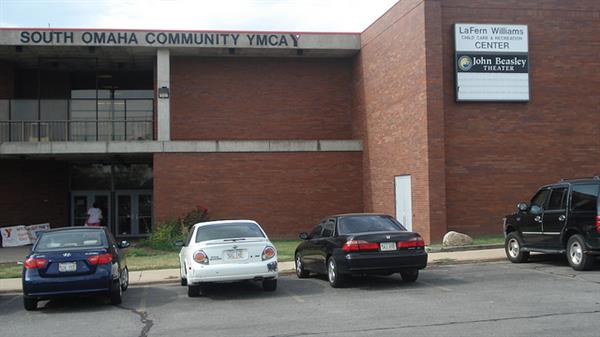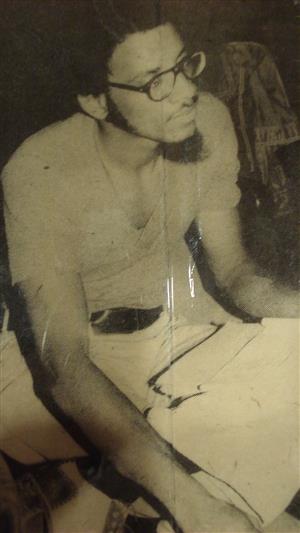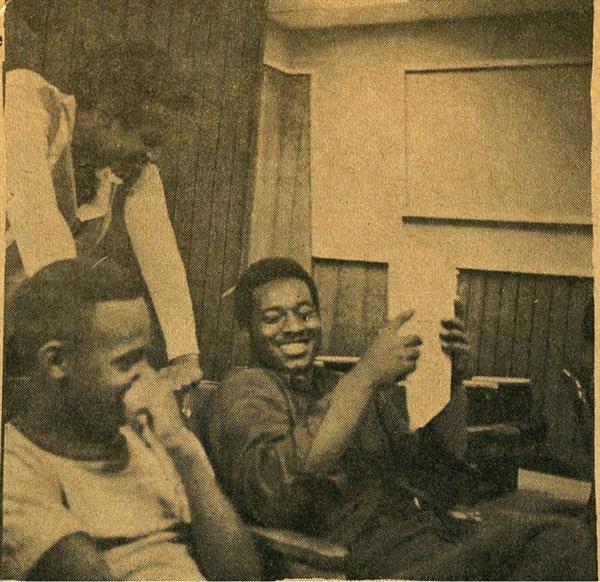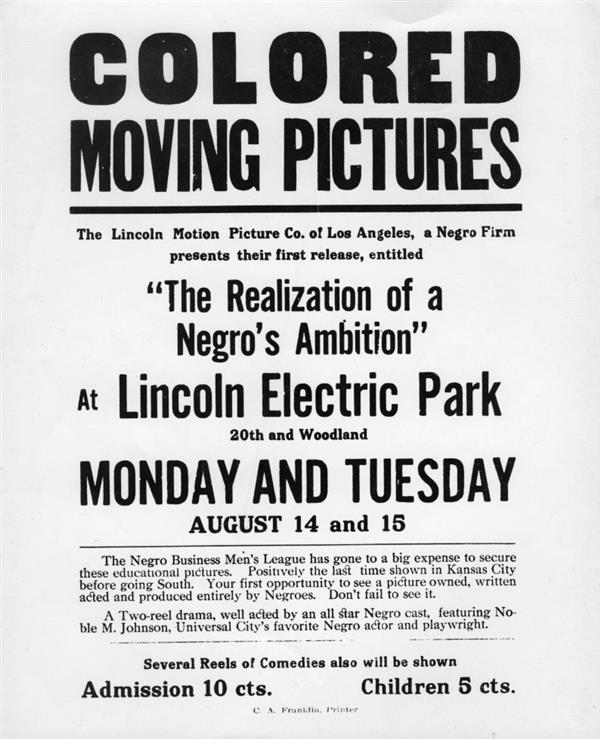Making Invisible Histories Visible
Page Navigation
- Making Invisible Histories Visible
- Lesson Plans and Resources
- iBooks on Omaha and Nebraska History for Primary Students
- Omaha Mapping Projects
-
African American Histories
- African American Artists
- African American Athletes & Facilities
- African American Churches
- African American Civil Rights Organizations - 1950s-1960s
- African American Civil Rights
- African American Contributions to Jazz, Gospel, Hip-Hop
- African American Dramatic Arts
- African American Education - Dorothy Eure & Lerlean Johnson
- African American Educators & Education
- African American Firefighters
- African American Homesteaders
- African American Law Enforcement
- African American Migration to Omaha
- African American Musicians of Omaha
- African American Newspapers
- African American Owned Businesses
- African American Politicians
- African American Social Life
- African American Workers at Omaha's Railroads & Stockyards
- African American Workers at the Naval Ammunition Depot in Hastings
- African Americans in the Civil War
- African Americans in Vietnam
- Charles B. Washington - Journalist and Civil Rights Leader
- Elizabeth Davis Pittman - Lawyer/Judge
- Green Book Omaha
- Marlin Briscoe - Professional Football Player
- Native Omaha Days
- Nebraska's Role in the Underground Railroad
- Sen. Edward Danner - Politician & Civil Rights Activist
- Sudanese Refugees
- Tuskegee Airmen
- European and Asian Immigrant Histories
-
Historic Neighborhoods & Buildings
- 24th and Binney/Wirt/Spencer Streets
- 24th and Lake Streets
- Central Park Neighborhood - 42nd and Grand Avenue
- Dahlman Neighborhood - 10th and Hickory Streets
- Hartman Addition Neighborhood - 16th and Williams Streets
- Indian Hills/Southside Terrace Neighborhood - 30th and Q Streets
- Jefferson Square Neighborhood - 16th and Chicago Streets
- Long Neighborhood - 24th and Clark Streets
- Orchard Hill Neighborhood - 40th and Hamilton Streets
- Smithfield Neighborhood - 24th and Ames Avenue
- St. Mary's Neighborhood - 30th and Q Streets
- Latino Histories
- Music Histories
-
Native American Histories
- Black Elk and John G. Niehardt
- Chief Standing Bear and Susette La Flesche Tibbles
- Dr. Susan LaFlesche Picotte - Native American Doctor
- Native American Education and Boarding Schools
- Native Americans in the Military
- Pre-statehood Interaction of Native Americans and Europeans
- Preserving Native American Tradition
- Restoring the Ponca Tribe
- The American Indian Movement in the 1960s and 1970s
- The Indian Congress at the 1898 Trans-Mississippi Exposition
- The Omaha Native American Indian Tribe
- OPS Elementary School History
- Redlining in Omaha
- Nebraska's Role in the Underground Railroad
- The 1898 Trans-Mississippi Exposition
African American Dramatic Arts
-
What is the importance of the dramatic arts for African American identity, community, and culture?
Waiting for the Spotlight
-

John Beasley Theatre / LaFern Williams Centerstage
Located at the corner of 30th and R streets, the South Omaha Community YMCA was the home for both the Center Stage Theatre Company and the John Beasley Theatre in 2012.
Dramatic Arts
-
Minstrel shows were a variety of acts performed to stereotypically downgrade the African American culture. You may find this historically funny or you may read this as extremely disgraceful to Blacks and disrespectful just as the Blacks did. However, what the whites did not know was that by trying to be comedic, all they were doing was shining a bright light in a dangerously dark space. This gave Blacks the drive and ambition to showcase their theatrical side and educate those who didn't know the real struggles and truth behind their Black culture. Some of the theatrical talent to arise from Omaha’s Black community included Lincoln Motion Picture Company, one of the first African American film companies; the Afro Academy for Dramatic Arts; and Center Stage Theatre, which won both the National and International Amateur Theatre Festivals in 1983.
A 9 minute video produced in 2012 talking about the early history of Minstrel Shows and the Lincoln Motion Picture Co. Interviews with Harry Eure, Camille Motoyer-Moten, Quiana Smith, Lanette Moore and quotes from Kathy Tyree.
The Afro Academy of Dramatic Arts
-


The Afro Academy of Dramatic Arts was a program that developed a Black cultural arts center for Omaha. They taught African Americans music, dance, art, theatre, and creative writing as a way to nurture a sense of pride within the African American community of Omaha. This was to show Omaha a more honest Black identity and allow African Americans to define themselves.
Center Stage Troupe
-

The picture above shows the cast and crew of “Ain't Misbehavin'” arriving at Eppley Airfield. They just came from the Toyama International Amateur Festival in Japan, where they won first place! They won the National Festival in Alaska, which is a milestone in letting an African American cast represent Omaha and America.
Bill Davis was an achiever in making a theatrical outlet for African Americans and other minorities. He founded Center Stage in October 1980. They performed shows such as “West Side Story”, which they changed from Puerto Ricans vs. Whites to Blacks vs. Whites. Sadly, because of the lack of money and commercial advertising, the theatre was shut down, but it was later opened again by John Beasley.
-
 John Beasley is a famous local actor, who re-opened Center Stage Theatre, renaming it the John Beasley Theatre, in November 2000. He has maintained the same mission as Center Stage; present shows that everyone could relate to. Beasley greatly admires the playwright August Wilson, who wrote a series of plays focusing on each decade of the 20th century and the African American experience. They even performed “Ain't Misbehavin'” again, which was a success. He has numerous classes and workshops for actresses and actors. This is very important because he brought back an award-winning tradition.
John Beasley is a famous local actor, who re-opened Center Stage Theatre, renaming it the John Beasley Theatre, in November 2000. He has maintained the same mission as Center Stage; present shows that everyone could relate to. Beasley greatly admires the playwright August Wilson, who wrote a series of plays focusing on each decade of the 20th century and the African American experience. They even performed “Ain't Misbehavin'” again, which was a success. He has numerous classes and workshops for actresses and actors. This is very important because he brought back an award-winning tradition.
An earlier era: Lincoln Motion Picture Co.
-

The Lincoln Motion Picture Company was one of the first “ Negro” organized film-making companies with an all-Black cast. Nobel Johnson founded the Lincoln Motion Picture Company on May 24, 1915, in Omaha, Nebraska, but later transferred to Los Angeles, California. Being performers of an all-Black cast, their motive and reasoning was to showcase “Black Pride” and erase stereotypes that white people imagined about them. “Realization of a Negro’s Ambition” was the first all-African American film they released. It was really risky but a huge opportunity for Black people to speak their minds and allow the community to see their real identity.
Additional Information
-
The information we’ve shared above touches on critical points in the development of African American theater in the Omaha area. Our documents span the 20th century, from one of the first film companies to successfully provide a voice for Black self-definition on the silver screen in 1915, to the triumph of the all-Black Center Stage troupe at the Toyama International Amateur Theater Festival in 1983.
By glimpsing the past, we can better understand the vibrant life of African-American theater on stages across Omaha today. In 2012, the Afro Academy exists under the direction of Harry Eure, as does the old Center Stage-turned-John Beasley Theater. Furthermore, Omaha’s Salem Baptist Church has a history of excellence in its drama ministry program through the work of nationally acclaimed playwright Llana Smith, who writes on both biblical and Black historical themes. She has passed on her gifts to her daughter Quiana (known professionally as Q. Smith), a Broadway actress and the first African-American woman to be part of Disney’s touring production of “Mary Poppins” in the role of Miss Andrew.
This tradition continues to bear new fruit as well in the work of sisters Lanette Moore and Camille Metoyer-Moten (formerly actresses with Center Stage) in forming the “Young, Gifted, and Black” program at the Rose Theater. The program consists of “an ensemble of African American youth [ages 13-18] who explore issues by performing the works of great African American playwrights” This is a wonderful opportunity for young Black artists both to hone their theatrical abilities and to explore their cultural history. Finally, I find great hope for the future of Omaha theater in the young researchers who compiled the documents above, each a budding playwright, director, or actor/actress. It will take educated and engaged young people such as these, of all colors, to ensure that what was once an invisible history will have the future in the spotlight that it deserves.
2012 MIHV Project
Student Reflections
-
"I am going to look at my history and continue to learn as much as I can. Because of this program, I have a better understanding of my community and my identity."
- Glennasha W.
"The stereotypes that white projected were the reason why a lot of Blacks wanted to become REAL performers... I now want to be, and do way more in my 'drama' life because of the struggles Black actors went through years ago."- Celine H.
"I got to learn what it was like to be Black during the Civil Rights movement. They would use theatre as a cathartic outlet for all their anger. They told me that theatre brought the community together to see a show. Everyone appreciated art, this added to the community's identity."- Ben A.
Resources
-
Gospel playwright Llana Smith enjoys her Big Mama’s time by Leo Adam Biga
Research compiled by Ben A., Glenasha W., and Celine H.

